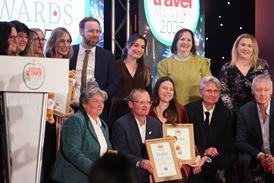The results of a six-year research study into the impact of school residentials were unveiled at an event at the National Geographical Society in London. STO was there to hear all about it.
For the past few years the Learning Away project has been researching the impact that residential school trips can have on pupils. Funded by the Paul Hamlyn Foundation, the project worked with 60 Primary, Secondary and Special schools to evaluate whether residential experiences could have a documentable positive effect on students’ learning, achievement and wellbeing.
The research itself was carried out by independent evaluators York Consulting, who used a combination of survey, school-level and focus groups data to test hypotheses. Participating schools were tasked with developing and testing a new range of unique residential programmes, working on goals as specific as GCSE attainment and transition support.
At the end of June, the results of the research were finally unveiled at the National Geographic Society in London. The conclusion being, that residential learning experiences ‘provide opportunities, benefits and impacts that cannot be achieved in any other context or setting. The impact is greater when residentials are fully integrated into a school’s curriculum.’
The study launch event began with an introduction by Steve Brace, head of education and outdoor learning at the Royal Geographical Society, who delivered a speech, welcoming Learning Away.
“We share the positive recommendations of this report in terms of getting people out into the real world to learn,” said Steve. “A personal reflection of this for me is of a wintery school trip weekend in Wales where a teacher called Mr Benson slowly became John Benson and then John. I owe my career to that weekend.”
Then, Peter Carne, project leader for Learning Away delivered a speech outlining the findings of the study.
“The report is cram packed full of evidence of the impact of residentials,” said Peter. “It’s powerful evidence. And it shows that that the impact is still there two or three terms after the residential.”
More specifically, according to the report, high quality residentials have been shown to have an affect on the following areas…
Improving students’ engagement with learning
79 per cent of secondary students indicated that the residential has made them realise that what they had learnt at school was important to them.
Improving students’ knowledge, skills and understanding
In long-term follow-up studies, 82 per cent of KS2 pupils said their teachers and lessons on the residentials helped them to learn.
Supporting students’ achievement
61 per cent of students who attended Calderglen’s Drama residential achieved higher than their predicted grade, compare to 21 per cent who did not attend.
Fostering deeper relationships between peers and between students and teachers
In long-term follow up studies 84 per cent of secondary students said that because of the residential they got on better with other pupils in the class.
Improving students’ resilience, self-confidence and wellbeing
78 per cent of KS” pupils felt more confident to try new things they would not have done before the residential.
Boosting cohesion and a sense of belonging
82 per cent of KS2 students said their residential experience helped them realise they could get on with people from other classes and schools.
Widening and developing pedagogical skills.
78 per cent of staff involved felt that Learning Away had a significant or transformative impact in their understanding of their student strengths and limitations.
Based on its findings Learning Away has also created a framework to help schools understand what a quality residential looks like. You can find a summary of this and more information on the benefits of residentials at www.learningaway.org.uk.











